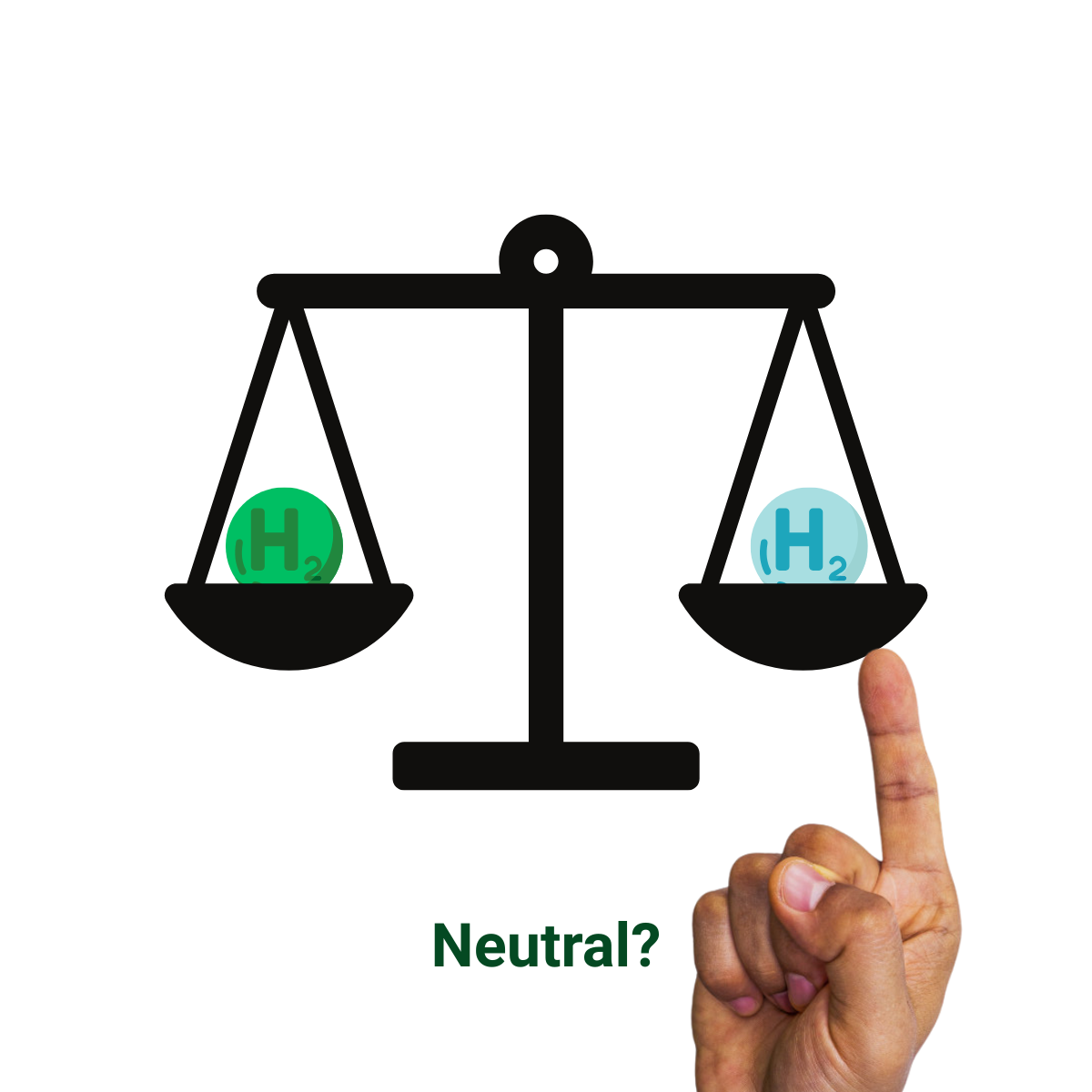Beware of “technological neutrality” in hydrogen policy and regulation. It’s a trap to maintain fossil fuel dependency
This week, our director Sam Bartlett explained why the idea of “technological neutrality” is intuitively appealing but often misunderstood and misrepresented. Vested interests in the fossil fuel industry routinely misappropriate the principle in an effort to reinforce fossil fuel dependence. We shouldn’t fall for it. If we truly want to create a level playing field, we should start by removing the massive subsidies that make dirty fossil fuel-based hydrogen the (artificially) cheapest option for producing hydrogen today.
In supporting alternatives, we should apply the principle properly, by first establishing which technologies are best aligned with our climate, energy security and development objectives and then supporting competition among the technologies that meet these criteria. It follows that green hydrogen technologies should be more strongly supported, and that low credibility blue hydrogen should be excluded.

A common refrain in the energy and climate change community is that policies should be “technology neutral”. This is especially the case in the hydrogen industry, which is currently dominated by fossil-fuel based production, resulting in very large greenhouse gas emissions (see box).

The oil and gas industry dominates the hydrogen industry (and many of its industry associations). Dirty coal and gas-based hydrogen is the cheapest option for producing hydrogen today because the industry has been very successful in attracting massive subsidies and avoiding taxation commensurate with the social and environmental damage that they cause: this is the “dirty discount”. The IMF estimates that global fossil fuel subsidies were $7 trillion or 7.1 percent of GDP in 2022, a $2 trillion increase in public support since 2020. Keep this figure handy whenever someone argues that the energy transition is too expensive!
Governments, regulators, investors and customers are wrestling with the question of which hydrogen technologies and projects should be discouraged and discontinued and which should qualify as “low carbon” and thus be encouraged and facilitated.
To help maintain the status quo, the oil and gas industry has skilfully advanced “technology neutrality” as a pragmatic, common sense principle. It’s closely linked to the view that governments cannot and should not “pick winners” but rather ensure a “level playing field” and allow market forces to determine which technologies are most effective and cost-efficient. Fossil fuel incumbents are not driving the innovation. They are focused on preserving legacy systems and delaying the transition to cleaner alternatives. Just as video rental chain Blockbuster did not spearhead Netflix, oil and gas companies are not likely to lead the transition to renewables.
Hydrogen Europe recently called for a “reality check for European Hydrogen Policy” urging EU leaders to “adjust the course” by adopting “a more pragmatic and technology neutral approach to enable cost-competitive hydrogen production”. In several key sectors, the EU has prioritised green “renewable” hydrogen. The technology neutral approach suggested would blur the lines between different types of hydrogen, and lead toward yet more public resources being allocated to fossil fuel infrastructure. For more details on the oil and gas industry’s lobbying campaign in the EU, see this brief from the Corporate Europe Observatory.
This is not an isolated approach. As we have noted previously, there is a concerted global campaign. In 2023, the IEA published a whole report entitled Towards hydrogen definitions based on their emissions intensity, arguing that we should “move away from the use of terminologies based on colours” and instead “use the emissions intensity of hydrogen production in the development of regulation and certification schemes”. Attend any hydrogen conference or workshop, and you will quickly find someone arguing that we need to look beyond colours and embrace technology neutrality.
This is a mistake.
The concept of “technological neutrality” and a sole focus on emissions intensity is intuitively appealing but often misunderstood and misrepresented. The principle behind technology neutrality suggests that laws and regulations should not require the use of any specific technology nor discriminate against any technology. The reasoning is that laws and regulations tied to a particular technology may become obsolete. Moreover, technology-specific regulations lead to dependency on specific manufacturers, developers, suppliers or distributors of technology or services. There is some logic in arguing that it is the emissions intensity, not the colour, that matters. But if the emissions intensity is not properly calculated, and the thresholds defining “low carbon” are not defined, this approach lends credibility to product with unsustainable emissions that displaces genuinely low carbon hydrogen and its derivatives.
In a skilful assessment focused on EU law, communication sector, Ulrich Kamecke and Torsten Körber highlight three common misconceptions in applying this the principle of technological neutrality:
First, the principle does not stipulate that different technologies cannot constitute separate markets; secondly, the principle cannot be construed as calling for the identical regulation of services belonging to different markets, and thirdly, the principle does not demand or even justify taking the goals of regulation—or even the goal to regulate—into account when defining markets.
Put simply, in a hydrogen context: we need to recognise that green and blue hydrogen have fundamentally different characteristics, are produced in and impact different markets, and have fundamentally different implications for the achievement of our wider policy objectives.
This final point is crucial and too often neglected. We should first look at our overall policy objectives. These typically include things like: increasing energy security by reducing dependence on energy imports; reducing and phasing out fossil fuel use; encouraging innovation and productivity; stimulating economic growth and job creation; and ensuring a just and sustainable transition where wider social, economic and environmental are taken into account. Taking a “technology neutral, emissions only” approach to defining and supporting “low carbon hydrogen” ignores all of these essential considerations.
In the hydrogen industry, the EU, China, India and Australia all have policy settings that clearly preference green hydrogen. Within this market, they often embrace technology neutrality (e.g., by not preferencing a particular type of electrolyser). But they don’t make the mistake of conflating blue and green hydrogen.
The fossil fuel supply chain is an incumbent industry with a century of investments and subsidies behind it. While the renewable energy sector is growing rapidly as the cost of renewables continues to fall, the production, transportation and use of renewable fuels is still in its infancy. Blue hydrogen encourages more gas use, which often undermines our wider policy objectives. Green hydrogen encourages more renewable electricity use, which can reinforce our wider goals. Safeguards are often needed to ensure that the expansion of green hydrogen does not indirectly undermine decarbonisation in other sectors. This again illustrates that blue and green technologies are fundamentally different and should be regulated as such.
In sum, beware of “technological neutrality” in hydrogen policy. Too often, it’s a simplistic trap used to encourage options that maintain fossil fuel dependence. When the fossil fuel industry talks about a “level playing field” based on emissions measurement alone, they too often ignore that we are already heavily subsidizing the wrong technologies, ignoring critical loopholes in emission measurement standards, and neglecting important aspects of what is truly sustainable.

Sources
IEA (2023) Towards hydrogen definitions based on their emissions intensity. IEA, Paris https://www.iea.org/reports/towards-hydrogen-definitions-based-on-their-emissions-intensity.
IEA (2024) Global Hydrogen Review 2024. IEA, Paris https://www.iea.org/reports/global-hydrogen-review-2024.
IEA (2024) CO2 Emissions in 2023. IEA, Paris https://www.iea.org/reports/co2-emissions-in-2023.
Sam Bartlett,
Director, GH2